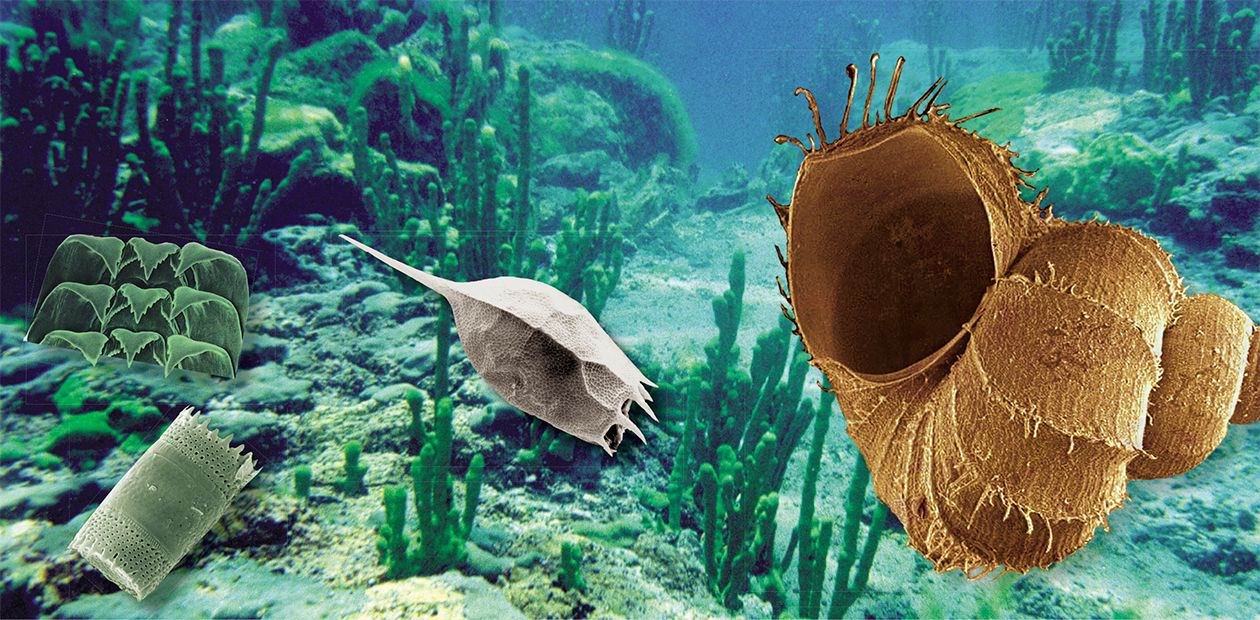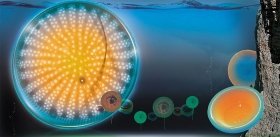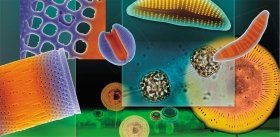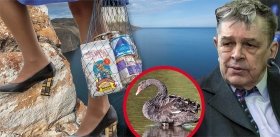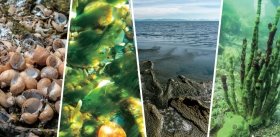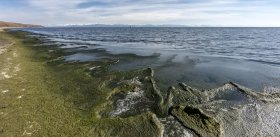Mollusks that Live Exclusively in Lake Baikal
Over 180 species of mollusks inhabit Lake Baikal, belonging to two classes: Gastropoda (snails) and Bivalvia (mussels). Here an interesting phenomenon is observed: as a rule, mollusk species living in other bodies of water of the northern hemisphere do not invade Lake Baikal. They are found only in shallow areas of its bays and gulfs. Likewise, Baikal mollusks do not spread beyond the lake, except for a modest number of species inhabiting the Angara River, which flows from Lake Baikal
The majority of Baikal mollusks — 79 % of gastropods and 52 % of bivalves — are endemics, i.e., they are found nowhere else on earth. The highest level of biodiversity is observed among gastropods. They make up a significant part of the entire biomass of the inhabitants of Baikal’s benthos. Baikal gastropods are represented by two endemic prosobranch (front-gilled) families: Baicaliidae and Benedictiidae, and three families: the heterobranch (various-gilled) Valvatidae and pulmonate Planorbidae and Acroloxidae, including endemic genera. These endemics will be the object of our attention.
Bread And …
Whatever we may think about lofty matters, the basic life functions of any organism are ‘down-to-earth’ questions of nutrition and reproduction. How and what do Baikal snails feed on, how do they reproduce, and do they differ in these functions from the gastropods of other bodies of water in our hemisphere?
Mollusks exhibit a high level of inventiveness in their manner of feeding. For example, species of the family Valvatidae are facultative filter-feeders. They quickly move along the substrate, gathering nutritive particles from the lake bottom by means of cilia encircling the lips of the mouth, like vacuum cleaners. Representatives of other families, Benedictiidae, Planorbidae, and Acroloxidae, simply graze on the lake bottom, scraping food from the hard substrate. In order to understand how the baicaliids (family Baicaliidae) feed, one must first become acquainted with the anatomy of prosobranch mollusks.
Prosobranches acquired their name because they breathe by means of a gill located on the front edge of the body. Water enters the mantle cavity of the mollusk because of the beating of cilia on the edge of the mantle and gill, which consists of several gill petals. To the right of the gill lies the osphradium — a sense organ that recognizes the chemical composition of the water. If this ‘mini-laboratory’ determines the water to be unsuitable for breathing, the snail hides within its shell, and covers itself with the operculum, located on the upper side of the leg. In case of a ‘positive result’ of the analysis, water enters the mantle cavity, and then is thrown out through the other end. Various particles in the water flowing through the mantle cavity are covered with slime secreted by a special gland, and are then likewise thrown out the other end, which is characteristic of the majority of prosobranch mollusks. Among all Baikal gastropods, only the baicaliids are real ‘gourmands.’ If a caught suspension turns out to be ‘tasty,’ special strings of slime containing the tasty particles are formed in the mantle cavity. The strings then travel along a cilia-lined groove to the right of the rostrum towards the mouth, and are then consumed.
Many-Toothed Gastropods
All gastropods capture their food the same way — by means of the radula. The appearance of the radula most of all resembles an ordinary kitchen grater. This peculiar digestive organ lies in the esophagus and consists of a long string of teeth. The number of transverse dental rows and the number of teeth in each row varies among various gastropods. The teeth on the front edge of the radula become worn out over time, but this does not harm the snail. It does not need a dentist: as the old teeth become worn out, they are replaced by new ones which form in a special radular pouch.
What does the diet of the Baikal gastropods consist of? It is necessary to note that tastes differ. Two species, Megalovalvata baicalensis and Kobeltocochlea martensiana, feed on debris that accumulates on the surface of green sponges. A large quantity of sponge spicules accidentally get into the snails’ stomachs, together with food in the form of various algae, mainly diatoms, as well as a small quantity of ciliates (protozoa).
It is interesting to note that the relative of M. baicalensis, Megalovalvata demersa, inhabiting sandy and rocky substrates, prefers to feed in spaces that are free from sponges. Almost half of its diet is made up of diatoms and golden algae.
The baicaliids’ main source of nutrition (up to 90 % of the stomach contents) is planktonic diatoms. Their diet is augmented by cysts, isolated cells and colonies of other algae, rotifers, ciliates, and microorganisms. Sometimes sponge spicules can be found in their stomach contents. The diets of species inhabiting soft substrates exhibit seasonal changes, while the diet of the inhabitants of hard substrates is rather constant.
In contrast to the baicaliids, certain species of benedictiid are truly omnivorous. They are capable of consuming everything, including detritus (dead organic matter from the lake bottom), plant and even animal food — juvenile fish and decomposing corpses of fish. The giant (in comparison to their Palearctic relatives) Baikal snails, the shells of which are 30—40 mm in height, have a mouth apparatus that looks quite frightening. These snails are capable of tearing out a piece of tissue from the body of a dead fish. The teeth of their radulae are free of small cusps, and have the appearance of long, sharp hooks.
In contrast to the prosobranches, pulmonate gastropods have lungs instead of gills. Their lungs are accommodated to absorbing oxygen from the aquatic environment. These snails, slowly moving along the substrate, feed mainly on diatoms.
What do such various and, in essence, undemanding feeding habits lead to? Thanks to their filtering method of feeding, numerous species of baicaliids use the most abundant and accessible source of nourishment in Lake Baikal — plankton. Scraping species of mollusks gather food by various means and from many various places (e.g., sponges, cliffs, sand). The result is that in one place of habitation more than 20 species of gastropods from various families can live together. And in Lake Baikal there is enough food for all.
The Gastropod Laid An Egg, And Not A Simple One
The distinction between genders among gastropods is quite conditional. All benedictiids and baicaliids have a definite gender. However, representatives of other families (valvatids, planorbids, and acroxids) are hermaphrodites, enacting the principle ‘two in one.’ In general, such individuals are capable of self-fertilization. However, in nature this ordinarily does not happen, since most often in gastropods the male sex products mature earlier than the female ones. Unfortunately, very little is known of the ‘intimate’ life of Baikal gastropods. It is unknown how individuals of a single species find each other for mating, and whether they have any mating rituals. We only know that among the majority of species, mating takes place during the spring-summer period. Conjugal pairs so tightly cling to one another, that sometimes it is very difficult to separate them.
All Baikal gastropods are egg-laying, and the appearance of the egg clutches of each group is very distinctive. For example, a valvatid clutch looks like an oval bag, containing up to 40 (or even more) eggs, covered by a membrane and joined together by special threads. Before the young hatch, the capsule breaks along its lateral seam. The clutches of planorbids and acroloxids contain fewer eggs — up to 10—12. Before hatching, the former’s capsule opens from above, like the lid of a jar, while young acroloxids have to gnaw their way into the world.
Baicaliids and benedictiids lay capsules, containing only one embryo. The shape and color of their clutches are various: smooth and wrinkled, dark and light, in the shape of a lens, cushion, cup, etc.
The main characteristic that unifies all Baikal gastropods is a real need for a hard substrate upon which to fix eggs. This can be tricky, since egg clutches of the ubiquitous gastropods cover all available hard surfaces. Snails inhabiting soft substrates attach their eggs to the shells of individuals both of their own and of other species on grains of sand, pebbles, and sunken pieces of wood. On the cliffs and rocky strata clutches can be found at the bases of sponges, in the empty houses of caddy flies, on smooth surfaces, in the cracks and holes of boulders, and also between Sphaeronostoc (blue-green algae) colonies. Most often, baicaliids and benedictiids lay isolated capsules, while the clutches of certain species consists of several eggs, and several species of the genus Benedictia create real ‘nests,’ consisting of 100 or more egg capsules, laid by several females.
The peak of the Baikal snails’ mating season takes place during the summer (June—July). However, in contrast to other freshwater snails of the northern hemisphere, the clutches of Baikal gastropods can be found practically all year. Another surprising peculiarity of the Baikal mollusks is that their young can hatch during the course of a rather long period of time (between three and twelve months after the eggs are laid), while ordinary freshwater snails hatch after three to four weeks.
The duration of embryogenesis is determined by the seasonal variability of the temperature of the bottom layer of water, where the snails live. Therefore, the embryos from clutches laid at the beginning of summer develop most quickly, but in total the hatching of young is very prolonged. It is interesting that the peak of hatching of certain closely-related species do not coincide. Such a divergence in timing probably reduces competition for food resources, the quality and quantity of which are likewise affected by seasonal fluctuation.
A Crowded, Yet Unhurried Lifestyle
Studying the lifestyle of gastropods, we discovered great differences between Baikal species and Palearctic species living in ordinary, relatively shallow lakes of the northern hemisphere.
Since even in the summer water in Lake Baikal is quite cold, the development of embryos occurs slowly, and snails grow for a long time. Therefore, they need over a year to reach adulthood. On the other hand, certain species can go through two generations during a single warm season.
Snails from ordinary freshwater bodies prefer to feed on detritus and higher water flora, while all Baikal gastropods to a certain extent have gone over to the most accessible food source: single-celled algae inhabiting both the lake bottom and the water itself. Furthermore, scavenging species are absent among palearcts.
Such peculiarities of the lifestyle of endemic Baikal mollusks make them more similar to sea, as opposed to freshwater gastropods. Just as in the sea, Baikal snails, ancient in origin, were able to survive unfavorable periods of climate change, glaciation, and rising tectonic activity. These days, living gastropods occupy all possible biotopes of Lake Baikal, including those located at great depth. In Lake Baikal, as in seas, snails are able to live at depths greater than 400 m, and one species has been found at depths greater than 1,000 m.
The mollusks in the shallow zones of Lake Baikal are striking for their abundance and diversity. In order to become certain of this, it is sufficient to simply glance at the lake bottom in the Zhilische Canyon, where on a single square meter more than 60,000 gastropods can be comfortably accommodated.
Some Information about the First Researchers of the Malacofauna of Baikal The first Baikal mollusks fell into scientists’ hands in the middle of the nineteenth century. P. Maak gathered snails from the Baikal littoral zone near the source of the river Angara and passed them on to the zoologist G. Gerstfeldt. The latter noted their uniqueness and their dissimilarity to all other fresh-water gastropods that were known at the time, and defined five species that were new to science (Gerstfeldt, 1859).Almost at the same time the Polish exile Benedykt Dybowski was working in the village Kultuk, located at the southern end of the lake. Over the course of several years he gathered and studied various Baikal fauna, including gastropods. He sent all of the mollusks that he found to his brother, a professor at the University of Lvov. V. Dybowski (Dybowski, 1875—1912) discovered that the majority of them represent genera and species that were new to science. He wrote detailed descriptions, accompanied by beautiful illustrations, of the shells of 36 species and subspecies. He also studied the arrangement of the internal organs and the morphology of the radula teeth of some of the species. His drawings are characterized by striking exactness, especially if we consider that a baicaliid’s radula is practically imperceptible even with a modern stereoscopic microscope. Made more than 150 years ago, these drawings continue to be passed from one scientific publication to another.
At the beginning of the 20th century, the Russian Academy of Sciences assigned an expedition under the leadership of A. Korotnev to explore Lake Baikal. In the course of two years the expedition’s participants went around the entire shore of the lake and gathered unique material, which was handed over to the Zoological Institute in St. Petersburg and processed by freshwater fauna expert V. Lindholm (Lindholm, 1909—1927). He further raised the estimated biodiversity of Baikal mollusks, describing 47 species and subspecies that were new to science, and discovered irregularities in the spatial distribution of mollusks in the lake.
After returning from exile B. Dybowski, together with Ya. Grokhmalitsky continued study of gastropod mollusks gathered in Lake Baikal. They were the first to note the great intraspecific variability of their shells and determined about 130 species and subspecies with varieties (Dybowski, Grochmalicki, 1912—1925). Starostin (Starostin, 1926) and M. Kozhov (1928—1971) continued research of the species composition and distribution of mollusks in the lake. Studying collections of samples gathered by researchers of the Baikal Limnological Station, Kozhov revised the Baikal mollusks and described 22 new species and subspecies. Thanks to his research, knowledge of Baikal gastropods was augmented by information about their morphology and biology, and also about their evolutionary transformations, as a result of which flocks of closely-related species appeared.
Like heavenly bodies, many species, genera, and families of Baikal mollusks were named in honor of their discoverers. The names of Maak, Gerstfeldt, the Dybowski brothers, Kozhov, and other scientists have been retained for all time in myriad ‘constellations’ of unique Baikal organisms.
In the next issue
Transparent and cold Baikal waters are generously endowed with amazing animal life. The lake is a realized dream of any fervent fisherman and naturalist. Since Baikal water is saturated with oxygen to maximal depth, fish live everywhere in the lake, on the bottom as well as in the water thickness. Bathypelagic freshwater fishes are a phenomenon peculiar to no other water body but Lake Baikal.
Unique cottoid fishes, more commonly known under the name of the bullhead, are among the most interesting. The reader will have an opportunity to make a closer acquaintance with their unusual appearance, surprising habits, and the sixth sense organ, which enabled them to inhabit and make themselves at home in the dark Baikal depths. Valentina Sideleva, Dr.Sc. in Biology, from the Zoological Institute RAS (St. Petersburg), in her article “Fish Community of Baikal” will share the secrets of the bullhead’s life with us.
It would not be an exaggeration to say that the Baikal omul is as well known as Lake Baikal itself. For many people these notions are inseparable and mean something unique. In the contemporary scientific freshwater fish systematics, the Baikal omul is a variety of the Arctic omul, inhabitant of the Arctic Ocean. However, with the aid of molecular-phylogenetic methods it was possible to prove that the Baikal omul is nothing other than a form of the common whitefish, which adapted to the specific conditions of its habitat. This occurred, according to the ‘diatom chronicle’, no later than 11—9 thousand years ago. You may read about these astonishing transformations of the Baikal omul in the next issue, in the contribution “Glorious Baikal … The Omul Barrel” by Lyubov Sukhanova, hereditary ichtyologist (the Limnological Institute SB RAS, Irkutsk).
Macrohectopus is yet another unique, though far less known, inhabitant of Lake Baikal. It is a semitransparent shellfish. Its full face resembles a character from popular American film “The Predator”. Out of all freshwater Amphipoda, it is the only one who chose the lake water thickness as its habitat. In her article “Sensible Predator”, Natalia Melnik, Cand.Sc. in Biology from the Limnological Institute of SB RAS (Irkutsk), will tell about this hypersensitive-to-light predator whose behavior and biology present so many enigmas.


